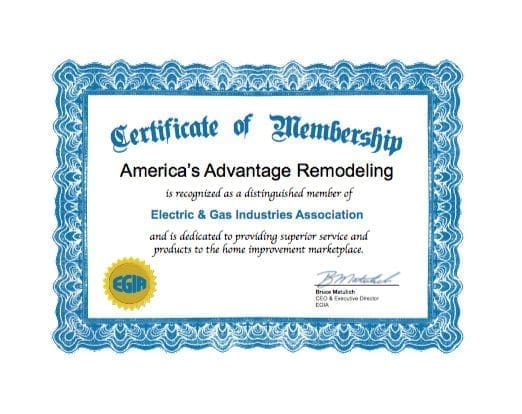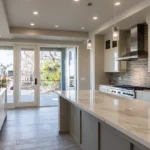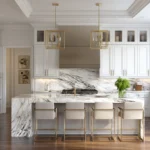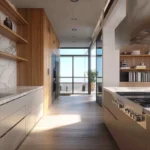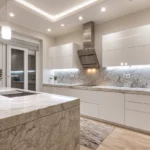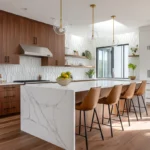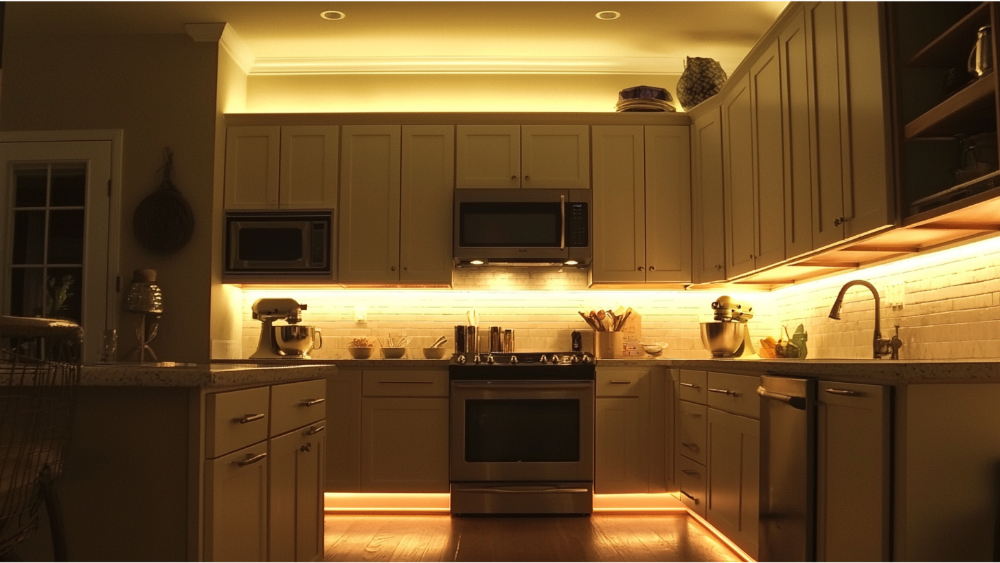
Choosing the right lighting for your kitchen can transform the space dramatically, especially when it comes to illuminating the area beneath your cabinets. This blog explores the various lighting options available, focusing on cool, natural, and warm light tones. We will dive into how each lighting type can impact the ambiance and functionality of your kitchen, discuss the benefits and drawbacks of each option, and offer practical tips on making the best decision based on your personal style and kitchen design.
Why Under-Cabinet Lighting Matters
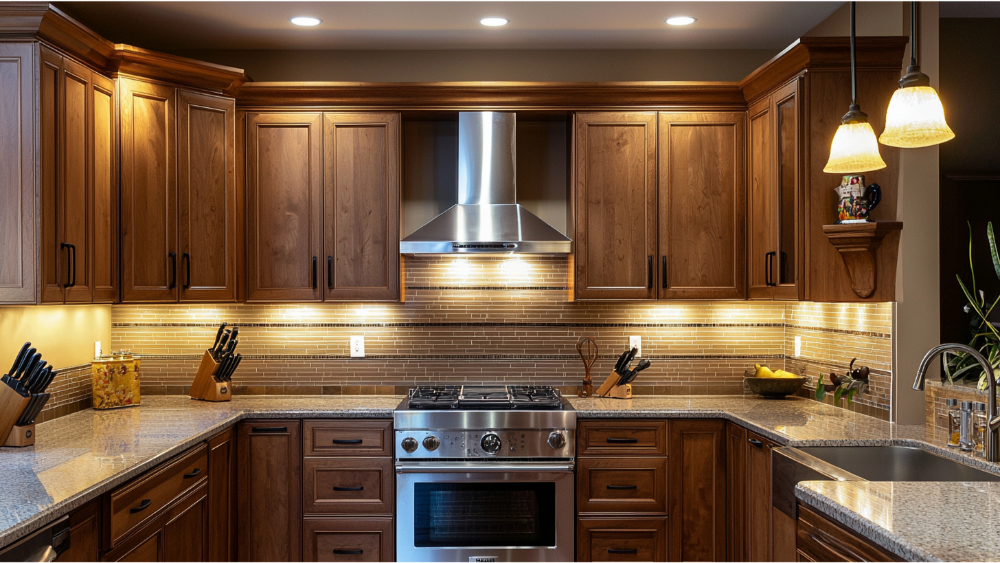
Enhanced Functionality
Proper under-cabinet lighting significantly improves the task lighting in your kitchen. With LED lights strategically placed beneath cabinets, you can illuminate countertops precisely where you prepare meals, cut ingredients, or follow recipes, making your kitchen tasks safer and easier.
Aesthetic Appeal
Cabinet lights can add a visual layer to your kitchen’s overall design. Warm lighting under cabinets can create a cozy atmosphere during evening hours, accentuating your kitchen’s style and complementing its color scheme, leading to an inviting ambiance.
Energy Efficiency
Implementing energy-efficient light fixtures like LED lights under your cabinets can reduce energy consumption. These fixtures offer longevity and durability, ensuring your kitchen remains well-lit without significantly impacting your electricity bill, thereby supporting sustainable living.
Breakdown of Lighting Types
Cool Light
Appearance
Cool light typically features a bluish-white hue that can make a space feel modern and sleek. Often compared to daylight, this type of lighting can enhance the visibility of your kitchen’s details.
Best For
Cool lighting is ideal for kitchens where clarity and precision are required. It is perfect for task-oriented areas where accuracy is essential, such as where you might be slicing vegetables or reading recipes.
Pros
LED lighting is often the key to achieving cool light in kitchens, as it is energy-efficient and long-lasting. By utilizing LED options, homeowners can enjoy bright, effective lighting while reducing energy costs.
In addition to energy savings, LED lighting enhances the visual clarity of food and cooking surfaces. This improved visibility aids in precise tasks, making it easier to prepare meals and navigate the kitchen safely.
LED lighting contributes to a modern aesthetic, offering a contemporary look that complements modern kitchen designs. This stylish illumination not only serves a functional purpose but also elevates the overall ambiance of the space.
Cons
The bluish tone can sometimes feel harsh and might not suit every kitchen ambiance. This aspect of the lighting can detract from the overall aesthetic and comfort of the space.
Additionally, this light can make the area feel less cozy, which isn’t ideal for evening dinners or warm family gatherings. A more inviting atmosphere is often desired for such occasions, and the bluish hue may not provide that warmth.
Warm Light

Appearance
Warm light emits a soft, yellowish glow that brings a sense of coziness and comfort to a space. It closely mimics the hue created by traditional incandescent bulbs, creating a welcoming and intimate environment.
Best For
Warm lighting is best for creating a cozy and inviting atmosphere, making it ideal for dining areas and kitchens where a relaxed, intimate setting is desired. This type of light is perfect for evening meals or family gatherings, enhancing the warmth and comfort of the space. The softer hue can help to blend seamlessly with traditional or rustic kitchen designs, contributing to a harmonious and welcoming environment. Some may prefer warm lights over cool or natural lights for these reasons.
Pros
Warm light enhances the coziness of a kitchen, creating an inviting atmosphere that is perfect for hosting and entertaining. It complements traditional and rustic kitchen designs, accentuating wood tones and natural elements. Warm light is less harsh on the eyes, contributing to a more relaxing and comforting environment suitable for leisurely meals and family gatherings.
Cons
Reduced visibility can be an issue, as certain lighting may not provide the same level of clarity for intricate tasks compared to cool lighting. The perception of colors can be affected, sometimes altering the appearance of the true colors of food and kitchen surfaces.
Natural Light
Appearance
Natural light mimics the balanced white light of daylight, offering a neutral and balanced hue that closely resembles the natural sunlight that streams through windows. This type of lighting is gentle on the eyes and provides true-to-life color rendering, ensuring that the colors in your kitchen appear as they would in natural daylight.
Best For
Natural light is best for kitchens where a true color representation is essential, such as in spaces where food preparation and presentation are important. This type of lighting is ideal for those looking to achieve an open and airy feel, as it brings the vibrant ambiance of natural daylight indoors. Kitchens with ample natural light can benefit from the balanced brightness it provides, helping create a refreshing and revitalizing atmosphere.
Pros
Versatility is key, as it provides a middle ground that is neither too harsh nor too cozy. This balance allows for a comfortable environment suitable for various activities.
True colors are another advantage, as they offer accurate color representation that enhances both food presentation and kitchen style. This feature ensures that the aesthetics of your culinary creations are highlighted beautifully.
Cons
Inconsistent availability of natural light can pose challenges, as it varies significantly based on the time of day and weather conditions. To address this issue, many find it necessary to supplement natural light with artificial solutions, such as LED light bars, to ensure a more consistent lighting environment.
Choosing the Right Light for Your Kitchen

Cool Light
Cool light is best suited for modern and contemporary kitchen styles. This lighting pairs well with sleek cabinet designs featuring flat-panel or high-gloss finishes. Recessed lighting and under cabinet lights with LED strips enhance the clean lines and minimalist vibe of such kitchens. Countertop materials like stainless steel or polished quartz complement the bluish hue, adding to the sophisticated feel of the space.
Warm Light
Warm lights complement traditional and farmhouse kitchen styles, where comfort and coziness are paramount. This lighting option works well with shaker-style cabinets or those with a distressed wood finish. Use under cabinet lights to accentuate the warm tones of granite or butcher block countertops. The soft glow of warm light enriches the inviting atmosphere, making it perfect for spaces that emphasize gathering and relaxation.
Natural Light
Natural light is ideal for transitional kitchen styles that blend elements of both modern and traditional aesthetics. Open shelving and light-colored cabinets work well to reflect and enhance the natural light, creating an airy and spacious feel. Countertop materials such as light marble or granite pair excellently, offering a balanced and neutral canvas. Recessed lighting and a strategically placed cabinet light can supplement this when natural light fluctuates, ensuring evenly lit spaces throughout the day.
Task Lighting Vs Ambient Lighting

Task Lighting
When considering task lighting, the focus is on providing bright, concentrated illumination for specific work areas within the kitchen, such as preparation zones and countertops. Cabinet lighting options, particularly an LED light bar, are excellent for task-specific areas as they supply direct light without casting shadows.
Halogen lights, with their intense output and warm glow, can also be positioned strategically to highlight key working surfaces, enhancing visibility for detailed tasks like chopping or reading recipes.
Ambient Lighting
Ambient lighting serves the purpose of creating an overall illumination that provides a general sense of brightness throughout the kitchen. This type of lighting is crucial for setting the tone and mood of the space, making it feel open and welcoming. Ambient lighting often relies on broader, more diffuse light sources, like flood lights, to cover large areas.
Accent lighting, such as decorative fixtures or under-cabinet lights with dimmable options, can also contribute to the ambient ambiance while emphasizing architectural features or specific design elements of the kitchen. This combination of lighting types ensures both functionality and an inviting atmosphere are achieved within the kitchen environment.
Frequently Asked Cool Natural Or Warm Light Under Kitchen Cabinets Questions
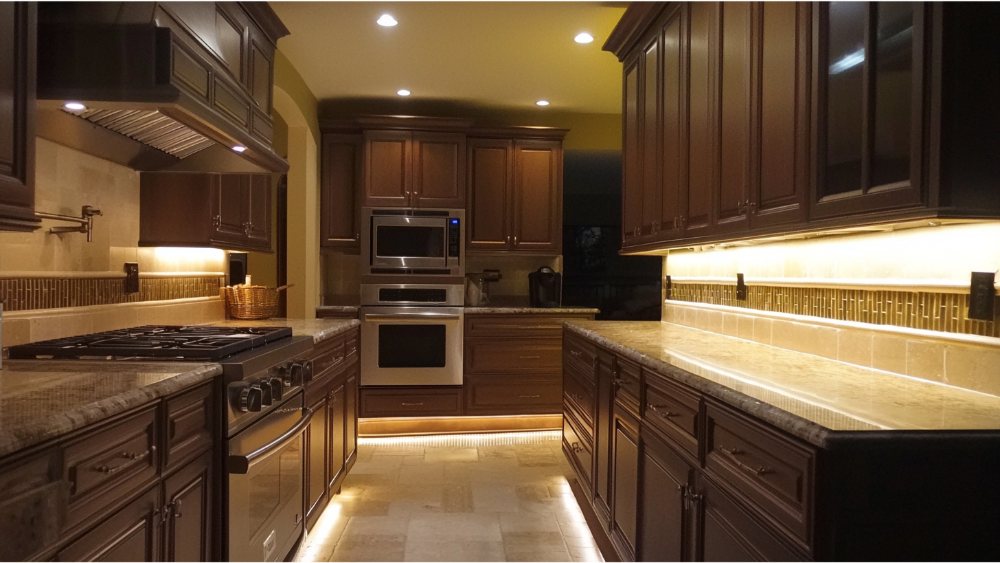
Should Under Cabinet Lights Be Warm or Cool?
The choice between warm or cool under cabinet lights largely depends on the overall mood and style of your kitchen, as well as the primary function of the lighting. Warm under-cabinet lights are ideal for creating a cozy and inviting atmosphere, perfectly suited for traditional or farmhouse-style kitchens. This type of lighting enhances earth tones and wood finishes, making it a great choice for spaces where warm hues dominate.
Cool under cabinet lights are perfect for modern or contemporary kitchens, where a sleek and clean aesthetic is desired. The bluish tints complement stainless steel appliances and glossy surfaces, offering both a sophisticated look and clearer visibility for intricate tasks. Ultimately, the decision should align with the style and functionality you wish to achieve in your culinary space.
Are LED Lights Better Than Halogen for Under Cabinets?
When it comes to selecting the best lighting for under cabinets, many homeowners find themselves choosing between LED and halogen options. LED lights are often preferred for several reasons, including their energy efficiency and long lifespan. They consume significantly less power compared to halogen bulbs and have a much longer operational life, often lasting up to 25,000 hours or more. This makes LEDs an eco-friendly and cost-effective choice over time.
On the other hand, halogen lights deliver a warm, bright output that some may find more visually appealing for certain kitchen styles. However, they tend to use more energy and generate a considerable amount of heat, which may not be ideal for all spaces. Frequent replacement is usually required due to their shorter lifespan.
Thus, if energy consumption and longevity are primary concerns, LED lights tend to be a superior option for under-cabinet installations. However, for those who favor the traditional warmth and intensity of light, halogen might still hold appeal despite its downsides. Ultimately, the best choice depends on individual preferences and the specific needs of your kitchen environment.
Do LED Under Cabinet Lights Get Hot?
LED under cabinet lights are known for their energy efficiency and minimal heat output compared to traditional lighting options like halogen bulbs. While all lights generate some level of heat during operation, LEDs remain relatively cool, making them a safer and more environmentally friendly option for kitchen settings.
The design of LED lighting systems includes heat sinks that effectively dissipate any heat produced, ensuring that the surfaces around them remain cool to the touch. This feature not only enhances safety by reducing the risk of burns or heat damage to cabinetry and other kitchen components but also contributes to the longevity of the bulbs themselves, further making LEDs a preferable choice for modern home lighting solutions.
Conclusion
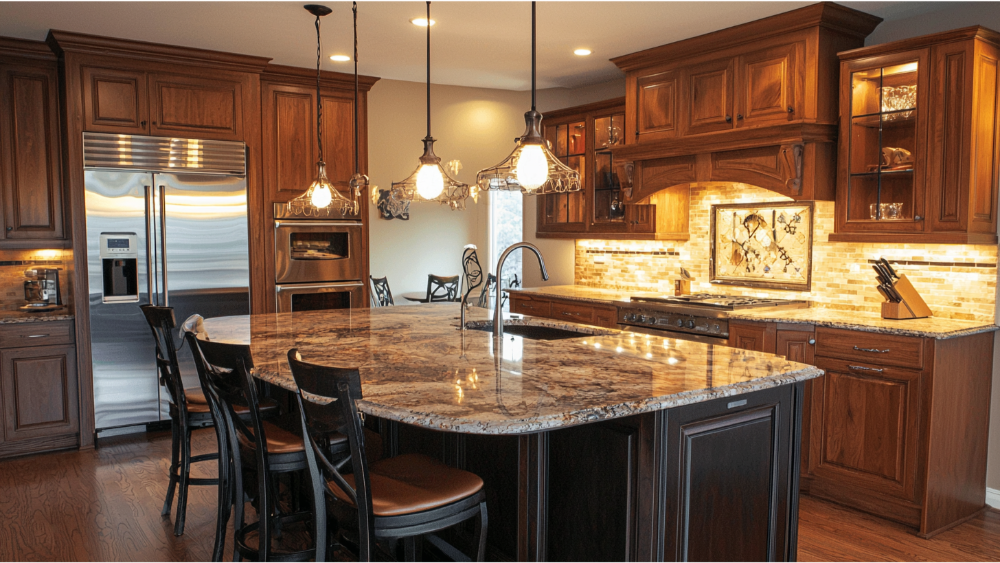
Selecting the right kitchen lighting involves balancing both style and functionality to meet the unique needs of your space. Understanding the differences between warm, cool, and natural light can help achieve the desired atmosphere, whether it’s a cozy, inviting environment or a sleek, contemporary look. Task lighting plays a critical role in illuminating work areas, while ambient lighting ensures the kitchen feels open and welcoming.
The choice between LED and halogen options depends largely on priorities such as energy efficiency, lifespan, and heat output, with LEDs generally offering more advantages. By carefully considering these factors, homeowners can create a well-lit kitchen that not only enhances the visual appeal but also improves everyday functionality.
CONTACT US
Our Services
Areas We Serve
Certificate
